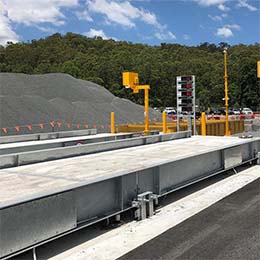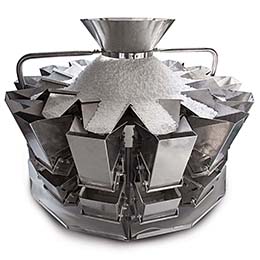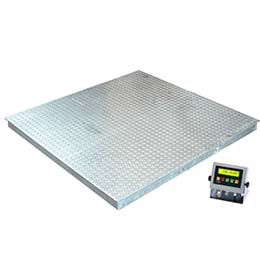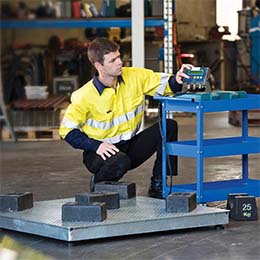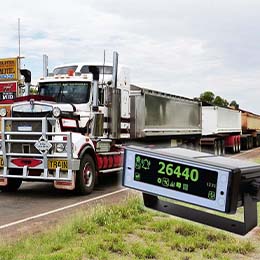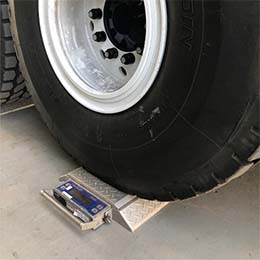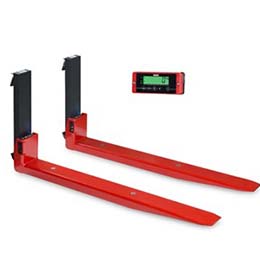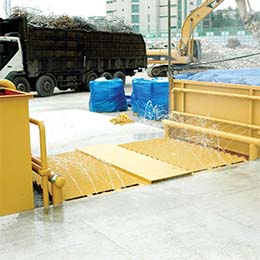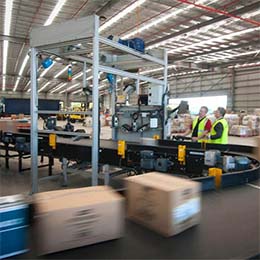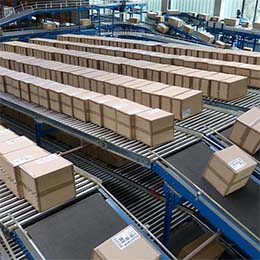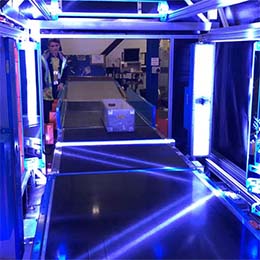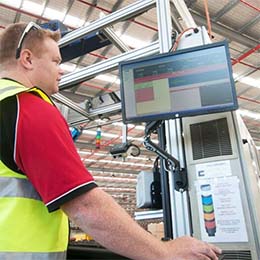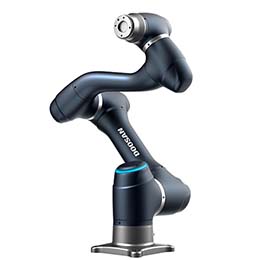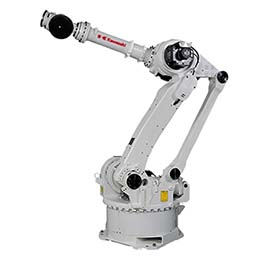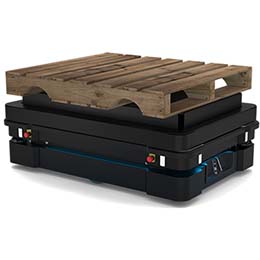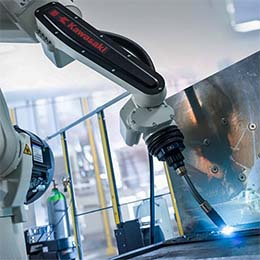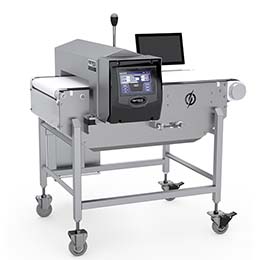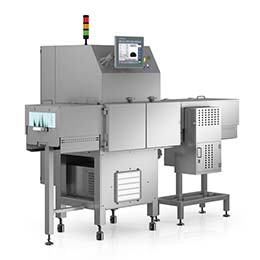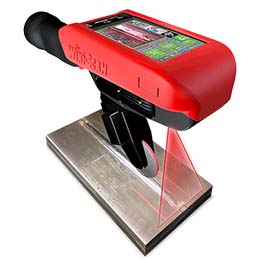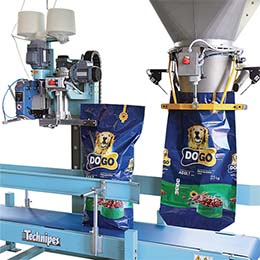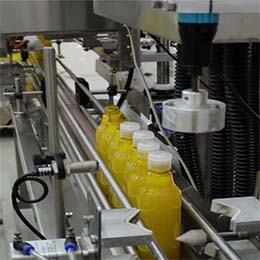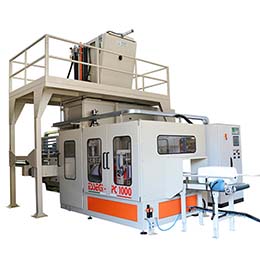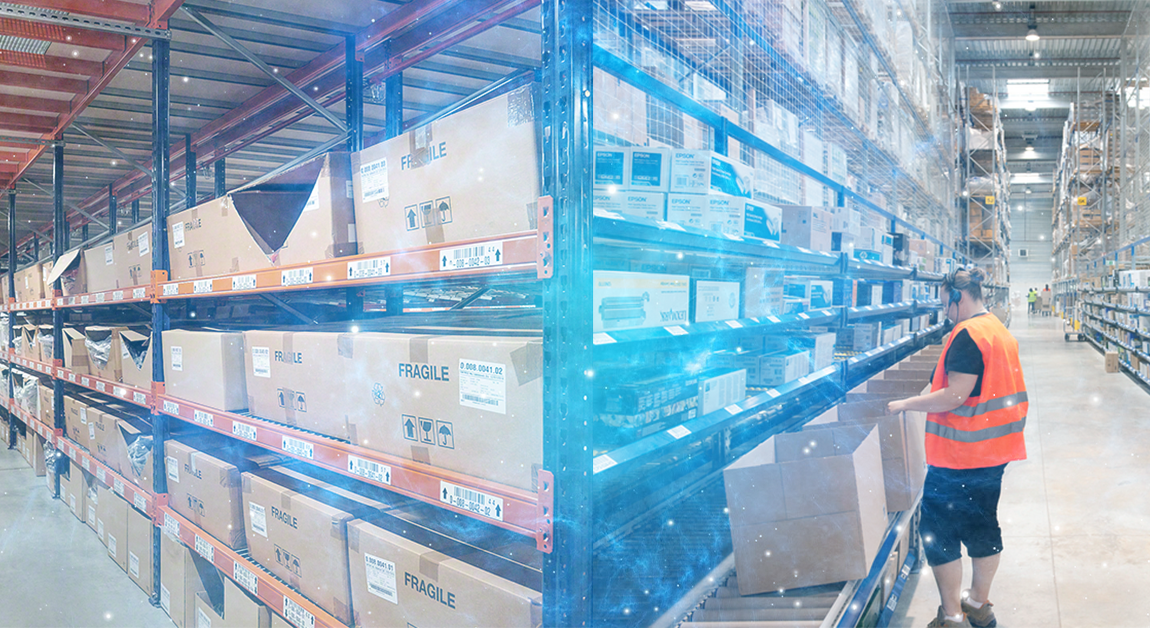Continuing on from the last blog post which outlined why your warehouse needs measurement automation, Bas takes a deeper look at two automation solutions for addressing order fulfilment and how automation (with precision dimensional data provided to it) can improve your fulfilment processes.
Automation Solution 1: Zone Routing
The first warehouse automation option is one featuring a ‘simple’ zone routing/skipping conveyor system that services 8 conveyor zones followed by a packing area and a bypass to a 4-lane sortation system.
Orders in the warehouse are picked either directly into shipping cartons for discrete orders, which are then automatically sealed, labelled and sorted by state, or batch picked into plastic totes for online orders, which are then processed at the packing area. The warehouse services 1,000 discrete orders to stores, with an average of 5 lines per order, and 1,000 online orders per day, with an average of 2 lines per order.
If no product volumetrics/dimensional data are available, the warehouse software system operating the solution cannot calculate the correct order carton, or number of cartons, to use for discrete orders nor can it determine how many online orders can be batched together into a single plastic pick tote. The process would be one of ‘elimination’ of orderlines. Only 1 size cartons and plastic totes are used, and they are centrally inducted for efficiency purposes using an automated carton erector and label applicator for traceability and routing of the cartons. The plastic totes have a permanent barcode affixed to the side of them.
For a discrete order within the warehouse automation example, 1 carton would be inducted onto the conveyor system to which all orderlines for that order are assigned. The carton would be diverted into each zone in which it has pick tasks after which a pick operator would scan the carton barcode and be directed to pick the products in their zone. This automation process will continue until either the order is completed, OR the carton is full. If the carton is full, the operator would have to inform the software system which will result in the current carton being sent to carton sealing and a new, empty carton to be inducted centrally to which all remaining orderlines are transferred. This carton would be directed to the same, or next zone, in which pick tasks remain.
Completed cartons will be directed to the carton sealing area where a carton reduction machine forms part of the solution. This machine will measure the content of the carton, reduce its size to the minimal height possible and seal it thereby saving void fill and unnecessary carton volume shipped.
Note that this process doesn’t necessarily reduce the number of cartons shipped, purely the physical volume of cardboard. There will still be instances where 4 orderlines would fit into the first carton, if the products are large, and 1 orderline will be shipped in its own carton. In other instances, a single carton could fit 10 orderlines if they are all small products.
Within the warehouse automation mix, for the online orders, the process would be roughly similar except the finished tote would be sent to a packing area for repacking into cartons/satchels. Without knowing the volumetric measurement of each product picked, you’re again relying on the operator to determine the correct carton or satchel size with the same issues mentioned before.
For the online orders the process is slightly worse as well. Because the warehouse software system cannot determine the number of products that fit into a plastic tote, a default value of 5 orders is set in the software system to assign to a single tote. These orders, however, can be for a single unit or for 10 units each. So, if 1,000 online orders are available for picking each day, at least 200 totes will be generated for picking. Sometimes orders will be split across multiple plastic totes if, during picking, the operator decides the tote is full and a new tote will have to be inducted for picking.
What would happen if they had captured the dimensions, weights and characteristics of each product?
The same process of induction would take place but this time we have 2 carton sizes available. The same footprint, but two different heights, a large carton and a small carton which is half the height.
The warehouse software system can now determine the exact content of each carton and tote. The result is that for some discrete orders 2, or even more, order cartons are released simultaneously for picking, each with their own set of orderlines. The product volumetric measurements and weights matched to the carton height.
The first benefit is that multi-carton discrete orders are picked faster since multiple order cartons can be released simultaneously instead of waiting on the operator to confirm a carton is full and having to wait for another carton to be inducted and transported to where the previous carton was declared full.
The second benefit is that now the warehouse software system will induct the correct height carton for all discrete orders. So, if an order fits into the small carton, only a lower height carton is released, reducing the cardboard volume altogether. If a multi-carton order fits into a large carton and a small carton, the system will release just that. No more reducing full height cartons down to a minimum.
For the online orders, the impact is even greater. The warehouse software system can now batch orders together based on a lot more criteria such as:
- Single orderline orders for the same product can be batched together in as little number of totes as possible making for a very efficient picking and packing process.
- Single orderline orders for different product can be batched together in as little number of totes as possible making for a very efficient packing process.
- Multi orderline orders with overlapping product can be batched together in as little number of totes as possible making for a very efficient picking and packing process.
- Multi orderline orders for different product can be batched together in as little number of totes as possible making for a very efficient packing process.
- Multi orderline orders with overlapping product can be split across different totes to pick the overlapping products together and sorting them to the discrete order at packing again making for a very efficient picking and packing process.
- Discrete online orders that would fit into a single order carton can follow the same process as the standard discrete orders and
Best of all though, the software system can direct the packing operators through the packing process to minimise the use of satchels and cartons.
Automation Solution 2: Shuttles, GTP and Zone Routing
Now, let’s look at the second warehouse automation option which features an automated shuttle solution with 35,000 storage totes, 4 goods-to-person (GTP) pick stations and is complemented by a zone routing system with 8 conveyor zones followed by a packing area and a bypass to a 6-lane sortation system.
Orders are picked either directly into shipping cartons for discrete orders, which are then automatically sealed, labelled and sorted by state/courier. Online orders are batch picked into order cartons for online orders, which are then either processed at the packing area or, if an order fills an entire order carton, automatically sealed, labelled and sorted by state/courier. The warehouse services 5,000 discrete orders, with an average of 8 lines per order, and 3,000 online orders per day, with an average of 1.5 lines per order.
If no product volumetrics/characteristics are available, the warehouse software system operating the system cannot calculate the correct order carton, or number of cartons, to use for discrete orders nor can it determine how many online orders can be batched together into a single order carton. The process would be one of ‘elimination’ of orderlines. Only 1 size carton is used, and they are centrally inducted for efficiency purposes using an automated carton erector and label applicator for traceability and routing.
For a discrete order, 1 carton would be inducted onto the conveyor system to which all orderlines for that order are assigned. The carton would first travel to a GTP station to pick the products that are stored in the shuttle system. The shuttle system would bring product totes to the GTP station and the operator would be instructed to pick the required quantity of that product into the order carton.
This is where it gets tricky and will become inefficient. GTP stations are designed to achieve anywhere between 350 – 700 orderlines per hour. This is somewhat dependent on how many units the operator has to pick out of each product tote, the configuration of the shuttle system and the system integrator’s implemented solution.
Shuttle systems will start retrieving product totes when the order carton arrives at a point on the conveyor system, or at the GTP station, where its sequence in the order carton queue cannot be changed anymore. This is to ensure the product totes arrive in the correct sequence for the order carton queue at each GTP station and to ensure the operator is continuously picking.
A queue of order cartons will be waiting at the GTP station and a second queue of product totes will continuously be retrieved for picking. The product totes are matched to the orderlines in the order cartons.
Once an order carton becomes full before all the products are picked, the operator will declare the order carton to be full and a new order carton will have to be inducted for the remainder of the orderlines. In this case, however, we have a queue of product totes arriving at the GTP station, in sequence, which contain products for the remaining orderlines of that order but no order carton to pick them into.
These ‘obsolete’ product totes will now have to be sent back to the shuttle system until such time that the next order carton containing the remaining orderlines for the order joins the queue of order cartons at the GTP station. Without knowing how much product fits into a single order carton, this will be a regular occurrence.
This is called SKU tote rotation and it is detrimental for the performance of any shuttle and GTP environment. Each tote that is delivered to the GTP station and not being used for picking reduces the available performance of the shuttle/GTP system. If this happens for 10% of the orderlines, you’ll lose 10% of your performance. If this happens for 50% of the orderlines, you’ll lose 50% of your performance, it’s that simple.
So, if your system was designed for 500 orderlines per GTP station you can lose between 50-250 orderlines of picking capacity at each GTP station. To put that into perspective, you could have saved yourself the investment in 2 GTP stations if it is 50% of the performance.
Once picking is completed from the product tote it will be returned to the shuttle system for storage. It will be retrieved again whenever there is another order carton requiring this product.
Completed cartons will be directed to the carton sealing area where a carton reduction machine forms part of the solution. This machine will measure the content of the carton, reduce its size to the minimal height possible and seal it thereby saving void fill and unnecessary carton volume shipped.
Note that this process doesn’t necessarily reduce the number of cartons shipped, purely the physical volume of cardboard. There will still be instances where 4 orderlines would fit into the first carton, if the products are large, and 1 orderline will be shipped in its own carton. In other instances, a single carton could fit 10 orderlines if they are all small products.
For the online orders, the process would be roughly similar except the finished cartons would be sent to a packing area for repacking into cartons/satchels. Without knowing the volumetric measurements of each product picked, you’re again relying on the operator to determine the correct carton or satchel size with the same issues mentioned before.
For the online orders the process is slightly worse as well. Because the software system cannot determine the number of products that fit into a carton, a default value of 5 orders is set in the software system to assign to a single carton. These orders, however, can be for a single unit or for 10 units each. So, if 1,000 online orders are available for picking each day, at least 200 cartons will be generated for picking. Sometimes orders will be split across multiple cartons if, during picking, the operator decides the carton is full and a new carton will have to be inducted for picking.
The zone routing process is identical to the one described previously.
What would happen if they had captured the dimensions, weights and characteristics of each product?
The same process of induction would take place but this time we have 2 carton sizes available. The same footprint, but two different heights, a large carton and a small carton which is half the height.
The software system can now determine the exact content of each carton and tote. The result is that for some discrete orders 2, or even more, order cartons are released simultaneously for picking, each with their own set of orderlines. The product volumetric measurements and weights matched to the carton height.
The first benefit is that multi-carton discrete orders are picked faster since multiple order cartons can be released simultaneously instead of waiting on the operator to confirm a carton is full and having to wait for another carton to be inducted and transported to where the previous carton was declared full.
The second benefit is that now the software system will induct the correct height carton for all discrete orders. So, if an order fits into the small carton, only a lower height carton is released, reducing the cardboard volume altogether. If a multi-carton order fits into a large carton and a small carton, the system will release just that. No more reducing full height cartons down to a minimum.
The third, and in this case most important benefit, is that the shuttle system can optimise its product tote retrievals to the GTP station and reduce, or completely eliminate, any unnecessary product tote rotations.
For the online orders, the impact is even greater. The software system can now batch orders together based on a lot more criteria such as:
- Single orderline orders for the same product can be batched together in as little number of cartons as possible making for a very efficient picking and packing process.
- Single orderline orders for different product can be batched together in as little number of cartons as possible making for a very efficient packing process.
- Multi orderline orders with overlapping product can be batched together in as little number of cartons as possible making for a very efficient picking and packing process.
- Multi orderline orders for different product can be batched together in as little number of cartons as possible making for a very efficient packing process.
- Multi orderline orders with overlapping product can be split across different cartons to pick the overlapping products together and sorting them to the discrete order at packing again making for a very efficient picking and packing process.
- Discrete online orders that would fit into a single order carton can follow the same process as the standard discrete orders and
Best of all though, the software system can direct the packing operators through the packing process to minimise the use of satchels and cartons.
About the author: Bas Schilders is the principal consultant at Fuzzy LogX who are the leading warehouse, logistics, and process improvement consultants in Australia. With a career spanning 2 continents and 20 years in warehouse improvements and solution implementations, Bas is one of the most experienced consultants in the country when it comes to logistics improvements and implementing warehouse automation solutions.
Learn more about Fuzzy LogX here: https://www.fuzzylogx.com.au/

